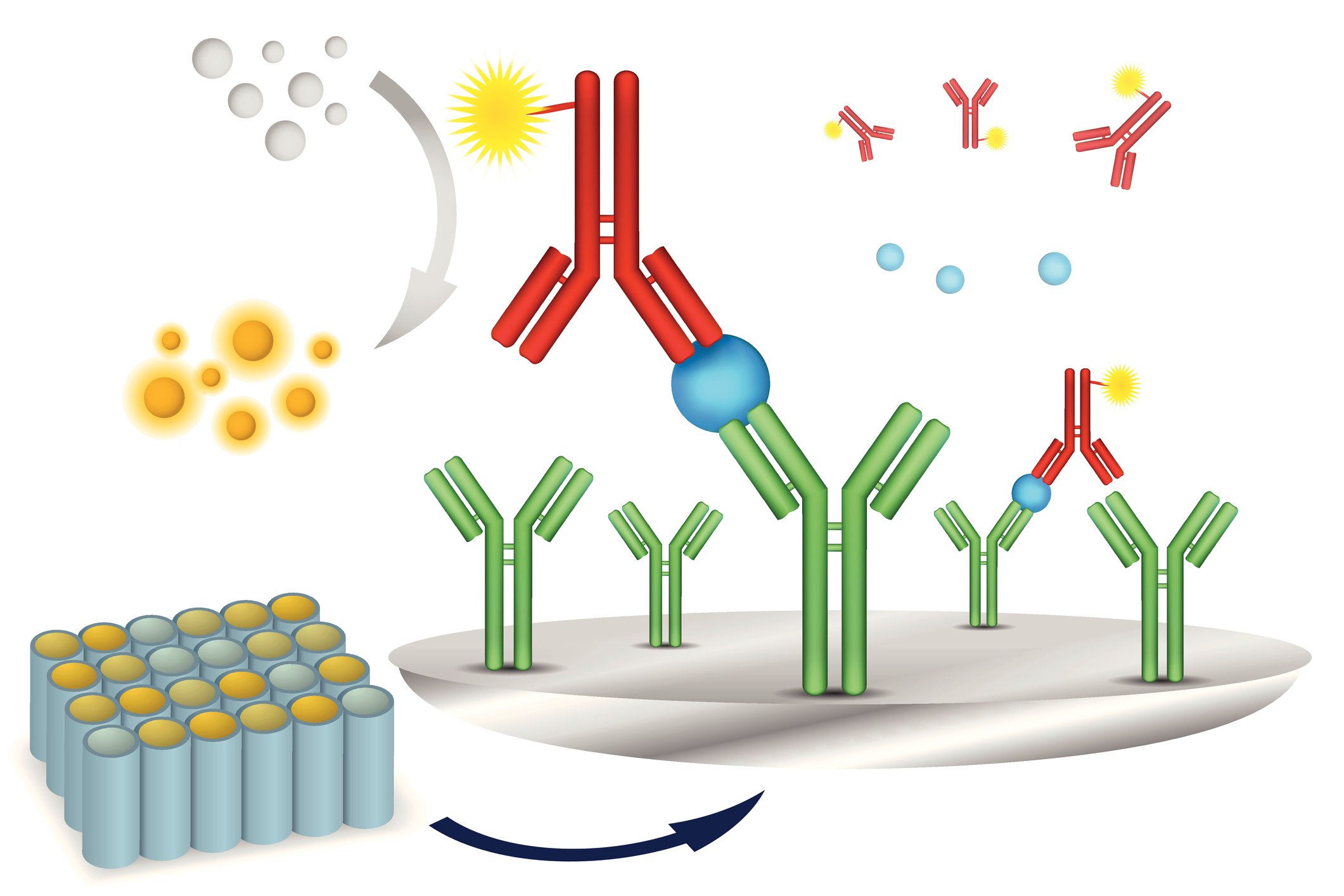A couple of months ago we described the sandwich elisa. Here we will discuss the other two main types of elisas—indirect and direct. Elisa is an acronym for enzyme-linked immunosorbant assay. The purpose of any elisa is to detect the presence of an antigen or antibody of interest. The indirect and direct elisa differ from the sandwich elisa because the antigen of interest is bound directly to the plate rather than a capture antibody. In either case, the key component is an enzyme-linked detection antibody. The enzyme is either colorimetric or chemiluminiscent. Chemiluminiscent enzymes are popular because they are easily read by a luminometer plate reader, making the process easy and highly quantitative.
Direct and Indirect Elisa: The difference between them
Direct Elisa and Indirect Elisa are both typically performed in 96-well polystyrene plates or 8-well strip tubes of the same material. The polystyrene is used because proteins bind well to the surface. The 96 well plates are used to ensure that plenty of space is available for determining optimum dilution for the reaction, creating standard curves, and running samples in quadruplicate or more. The 8-well strips are available for finely-tuned elisa processes where a 96-well plate seems excessive.
Indirect and direct elisa have antigen bound directly to the polystyrene well. These assays differ only in the detection antibody used. In a direct elisa only one antibody is used—this single antibody is conjugated directly to the detection enzyme. The indirect elisa requires two antibodies—a primary antibody and an enzyme-linked secondary antibody that is complementary to the primary antibody. Aside from this difference, the two protocols are similar in that a substrate is added to the well to be acted on by the detection enzyme to produce a color change, a fluorescence, or a light emission (chemiluminescence).
Direct Elisa: Benefits and Disadvantages
The most obvious benefit of the direct elisa as compared to the indirect elisa is that only one antibody is needed and it requires less time to complete the assay. The second benefit is that the potential for non-specific cross-reactivity of the secondary antibody is completely eliminated.
There are disadvantages to using the single antibody direct elisa technique. One disadvantage is that the act of attaching an enzyme to the antibody can interfere with locations on the antibody that should be reacting with the antigen. This can decrease the reactivity of the antibody. Additionally, there is less flexibility in choice of enzyme-substrate detection system, and a labeled antibody must be created for each elisa experiment.
Indirect Elisa: Benefits and Disadvantages
The major benefit of the indirect elisa is the flexibility and choice available in labeled secondary antibodies and enzyme-substrate detection systems. A secondary antibody can be used as long as it matches the host species of the primary antibody. This increases the options and means that there is a high chance that an appropriate primary-secondary antibody combination will be on hand in the laboratory at all times. Also, different enzyme-substrate detection systems can be used with the same primary antibody. This allows for a greater ability to fine-tune and perfect the elisa protocol. Another major benefit is that the primary antibody has more binding sites for the secondary antibodies than the antigen has for an antibody. This means that there is no problem with loss of reactivity, and it is actually possible to amplify the signal.
The two major disadvantages of the indirect elisa are the time-consuming extra step and the potential for cross-reactivity of the secondary antibody. The cross-reactivity can often be reduced by performing proper blocking steps. The extra time for the secondary antibody is often a small price to pay in exchange for the greater flexibility of the system.
More ELISA techniques
There are other ways to utilize the ELISA technology, such as the sandwich ELISA, which you can read more about in the sandwich ELISA (<- make that a link) blog post. Briefly, the sandwich technique has an immobilized antibody on the surface of the ELISA plate, which binds an analyte. Next, a detection antibody is bound to the analyte, creating the antibody sandwich. A secondary antibody will likely still be used to create a detectable signal. A competition/inhibition protocol can be applied to all these techniques. For a competition/inhibition ELISA, an analyte solution is incubated with antibody, and that mixture is put into the ELISA plate. This is a competition because the more antigen there is in solution, the less antibody will be able to bind analyte in the plate.
More information:





